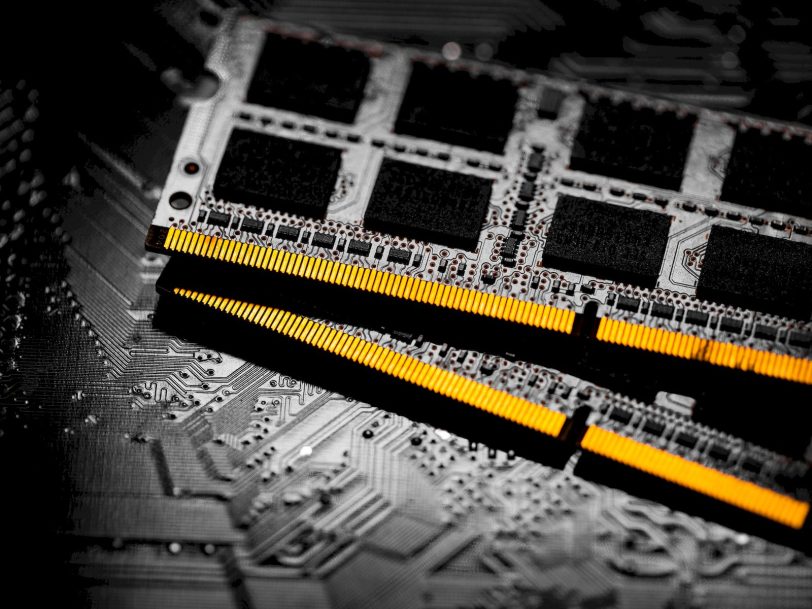What is LPDDR5 RAM?

LPDDR5 memory has arrived to replace LPDDR4. The evolution of RAM technology has taken another level in development. Slowly, however, new systems are emerging that support this memory, from laptops to mobile devices to smart home systems.
LPDDR5 RAM not only provides more performance, it is also designed to be a bit more versatile and can be used on any device without limitations. In this way, there will not be significant differences between the performance offered on a laptop and a smartphone, for example, as in the previous model.
LPDDR5 memory description
There are also variants of DDR memory, such as DDR4 or DDR5. This applies to LPDDR4 or LPDDR5 as well as its siblings LPDDR4X and LPDDR5X. They all share a large number of qualities, but differ in the purpose for which they are designed.
The abbreviation LPDDR stands for Low-Power DDR, that is, it is a low-power DDR memory designed for any computer that depends on the battery or needs to reduce its consumption to make it as efficient as possible.
On the other hand, LPDDR4x was a Samsung proposal as a variant of LPDDR4 and would later become a standard and also allow for developments like LPDDR5x. This memory not only saves more power by reducing the I/O voltage from 1.1v to 0.6v, but also provides die and speed improvements for smaller applications.
Features of LPDDR5
- Attribute
- LPDDR4
- LPDDR5
- Max speed
- 4266Mbps
- 6400Mbps
- Permissible capacity
- 4 – 32GB
- 12 / 48GB
- Channels
- 2x 16-bit
- 1x 16- bit
- Voltages (min, medium, max)
- 1.8v / 1.1v / 1.1v
- 1.8v / 1.05v / 0.9-0.5v
- Usements
- PC and mobile devices
- PC, mobile devices, IoT
This memory was released by JEDEC in 2019 under the JESD209-5 standard, a few months after the LPDDR5 demo prototype released by Samsung in 2018. LPDDR5 includes interesting technical features and improvements over its predecessor. Some of these features are:
- Supports 4, 8 or 16 row configurations for higher capacities.
- The speed at which the chips work is 800 Mhz.
- 6400 Mbps speed.
- 51.2 GB/s total bandwidth.
- Switching between two different frequencies.
- 20% consumption savings.
- 50% performance increase.
- Data-Copy and Write-X commands.
- Dynamic voltage and frequency scaling.
- New clock architecture named WCK & Read Strobe.
So far it has been announced that AMD Van Gogh (APUs), Intel Tiger Lake, Apple Silicon, HiSilicon Kirin 9000 Series (Huawei), Qualcomm Snapdragon 888 processors will support LPDDR5, but this list will expand as new products are released.
Gradually more will join the list, allowing memory controllers or MMUs to support this new LPDDR5 technology.
LPDDR5x features
LPDDR5x was released by JEDEC in the summer of 2021 under the JESD209-5B standard. This new, improved app also includes highlights:
- Speed up to 8533 Mbps.
- Improved signal integrity with TX/RX equalization.
- Reliability improvements with a new adaptive refresh manager.
- Prefetch remains the same as LPDDR5 (16n).
When will DDR6 RAM arrive?
By the way, GDDR6 memories are already used in video cards. So video cards already have DDR6. For the time being, DDR4 is still sufficient for the rest of the components and gradually DDR5 will replace it. DDR6 is still a few years away, but Samsung is already making plans for the new DDR6, which it plans to launch in 2024.
If we go with DDR6, we say that this new memory has very high goals, but we will see if there are alternative solutions until then. According to the figures given by the South Korean company, it can achieve maximum speed from 12.8 to 17 Ghz. These are truly dazzling numbers, but there is another equally interesting fact, for example the transfer rate that each channel can achieve.
In this other sense, we have 100 GB/s per memory channel for a single module. So if we have a DualChannel it will increase to 200GB/s and with QuadChannel to 400GB/s.